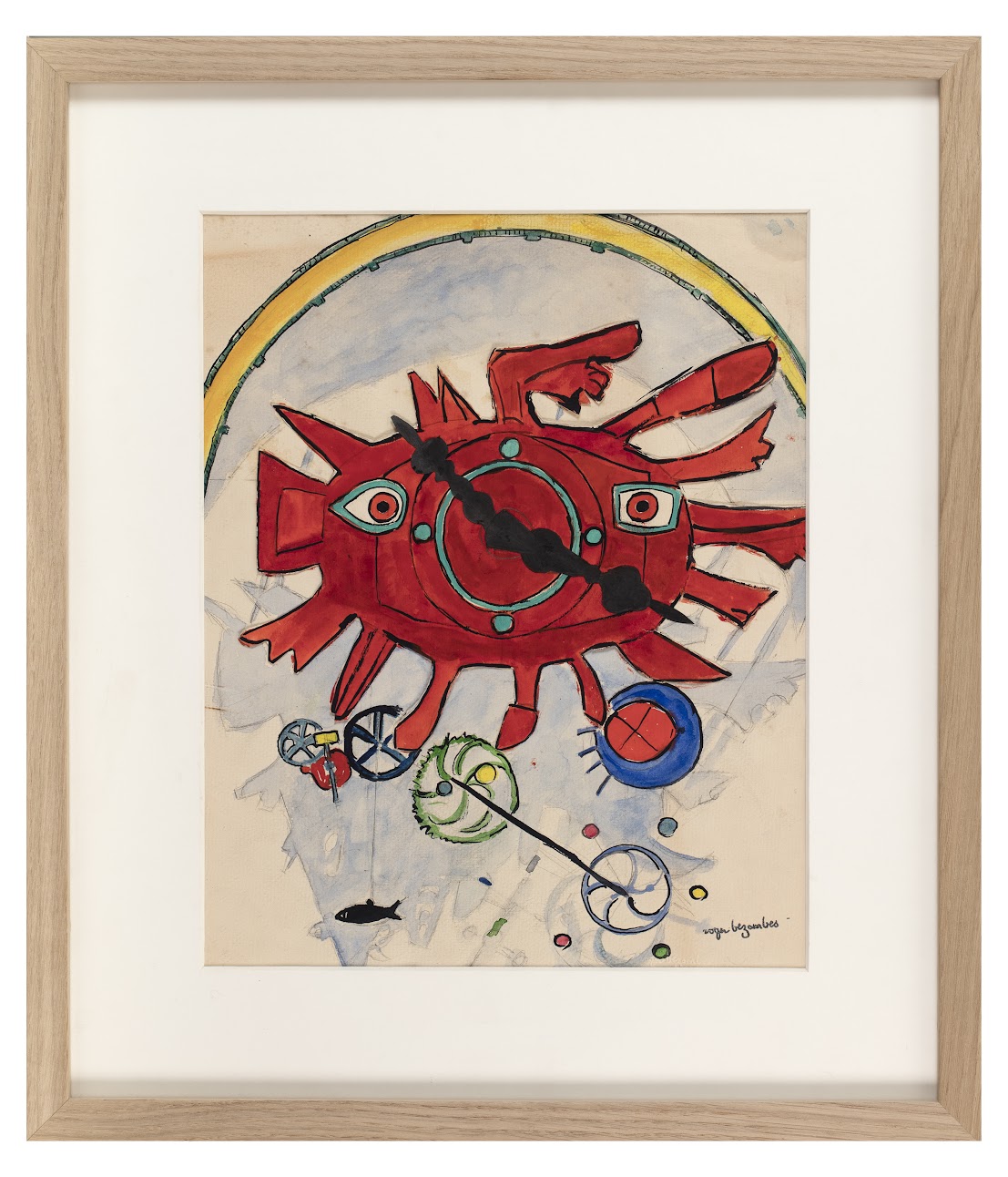Roger Bezombes, born on January 17, 1913, in the 19th arrondissement of Paris, was a French painter, engraver, and sculptor, an emblematic figure of the second School of Paris.
An orphan from a young age, Roger Bezombes had to take on various small jobs to support himself. In 1930, he participated in the installation of the Bauhaus exhibition at the Grand Palais. He became a student at the École nationale supérieure des beaux-arts in Paris, where he trained in fresco under the guidance of Paul Baudoüin. Self-taught, he created copies of masterpieces at the Louvre Museum and discovered the works of Paul Gauguin, Vincent van Gogh, and Henri Matisse, thanks to Maurice Denis, with whom he maintained close ties until Denis’s death in 1943.
Traveling was one of the driving forces behind Bezombes’s artistic inspiration. In 1937, he traveled to Morocco and befriended Albert Camus. In 1938, he held his first solo exhibition at the Charpentier Gallery in Paris, where he presented paintings and gouaches inspired by Morocco. After establishing his studio at 3 Quai Saint-Michel in Paris, Roger Bezombes became a professor at the Académie Julian in 1950. His career took a decisive turn in 1955 when he was appointed official painter of the Navy. Over the years, he traveled to Greece, Palestine, Tunisia, and Egypt, further enriching his artistic output.
His style was in constant evolution, notably influenced by the paintings of Van Gogh and Braque in his landscapes of Provence. Gradually, he moved towards a more schematic approach, where splashes of color and textures took precedence over the subject. He also experimented with composite works that combined watercolors and collaged papers.
The artist produced a diverse range of works, including paintings, frescoes, tapestry cartoons, book illustrations, and sculptures. His interest in monumental art was evident through numerous commissions for tapestries, notably at the Gobelins and Aubusson. Between 1952 and 1953, he created a monumental ensemble of 300 square meters for the Pavilion of France in Overseas Territories at the Cité Universitaire in Paris. Among his iconic works are color lithographs for “The Thousand and One Nights” and monumental ceramic decorations. His style, often baroque, is characterized by rich compositions filled with characters, landscapes, and still lifes.
Roger Bezombes lived for many years in his Parisian studio, and in the 1950s, he acquired a Provençal farmhouse in Maillane, near Saint-Rémy-de-Provence, where he continued to create. He passed away on August 9, 1994, in Ivry-sur-Seine at the age of 81 and is buried in the Montparnasse Cemetery in Paris.

Sign up to the newsletter and stay informed about our latest acquisitions and exhibitions:
© Galerie Rousset 2023